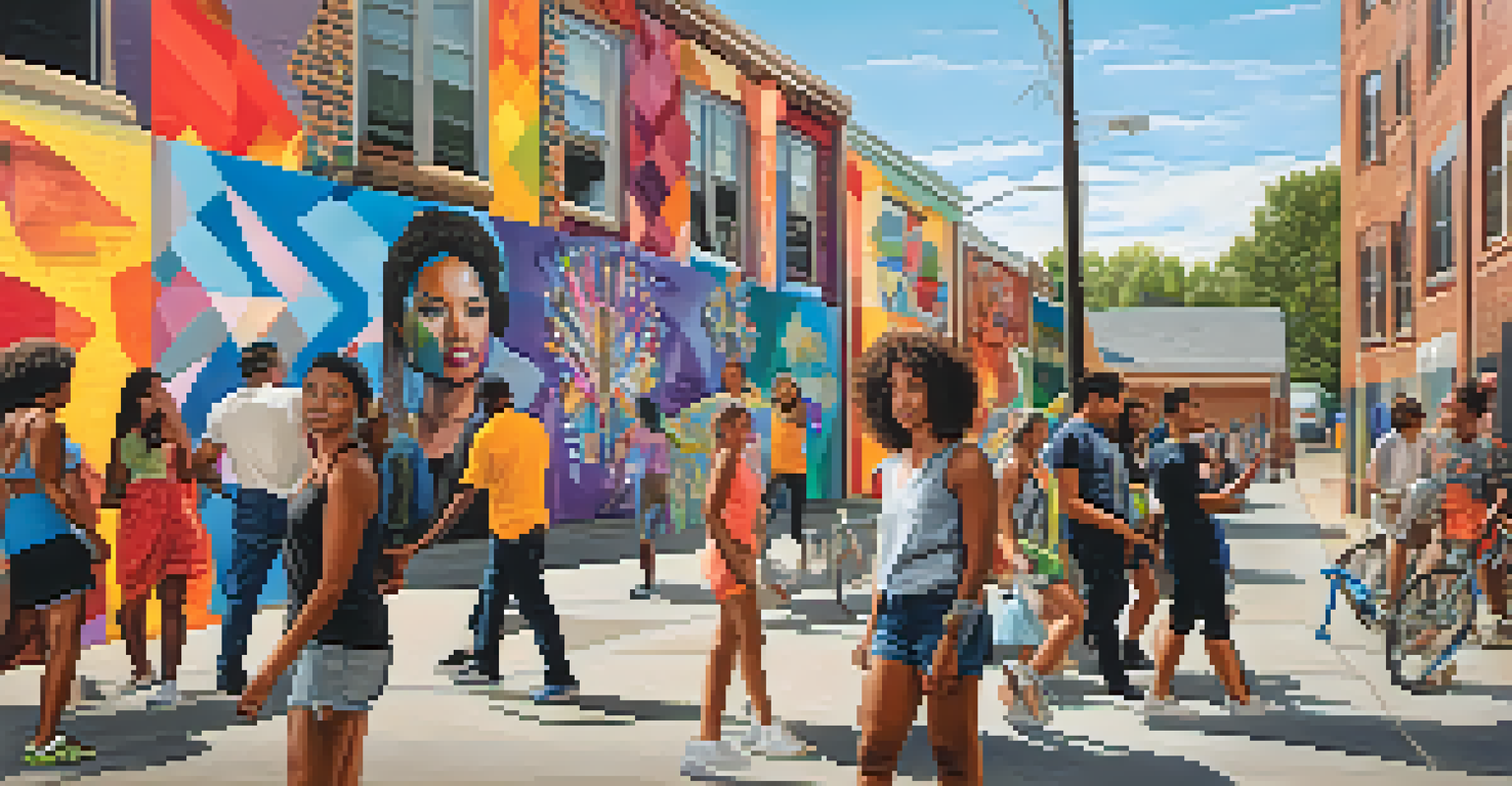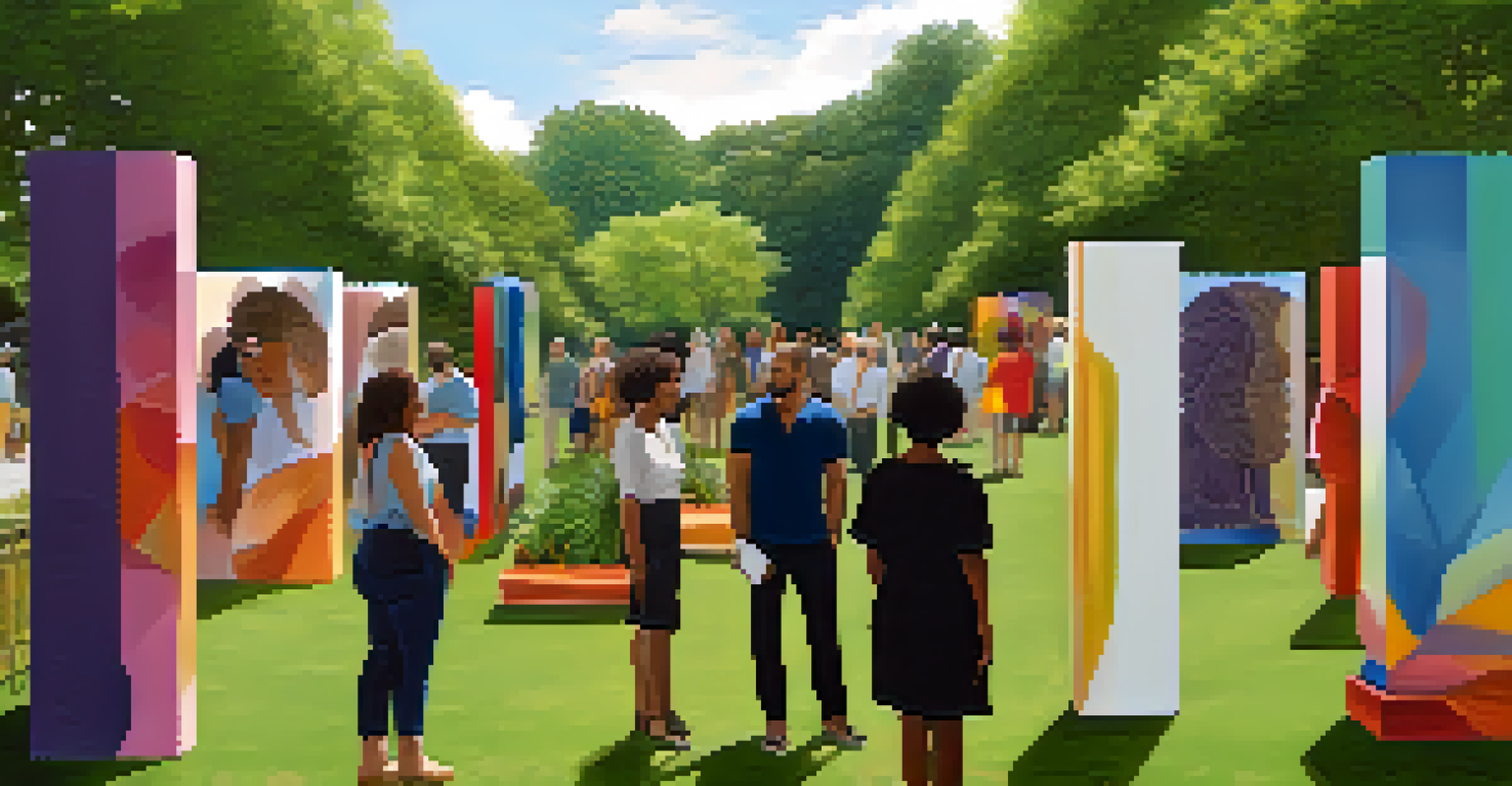Analyzing Gender Perspectives in Historical Art Movements

Understanding Gender Perspectives in Art History
Art history is not just a timeline of styles and techniques; it's also a reflection of the societal values and gender norms of its time. Gender perspectives in art help us understand how the roles of men and women have evolved and influenced artistic expression. By analyzing these perspectives, we can see how artists both challenged and conformed to contemporary gender roles, shaping their work accordingly.
Art is a reflection of our society and a means of challenging its assumptions about identity and gender.
For example, while the Renaissance was predominantly male-dominated, it also birthed influential female artists like Sofonisba Anguissola. Her work provides a fascinating lens through which we can explore the intersection of gender and artistic achievement. Understanding these dynamics allows us to appreciate not only the art itself but also the cultural context in which it was created.
Ultimately, acknowledging gender perspectives in art history opens the door to a richer, more inclusive understanding of artistic movements. It encourages us to question whose stories are told and whose voices are amplified, leading to a more comprehensive narrative of art history.
The Role of Women in Art Movements
Throughout various art movements, women have played pivotal roles, often overlooked in mainstream narratives. From the Impressionists to the Surrealists, women artists contributed significantly, yet their stories are frequently eclipsed by their male counterparts. This oversight speaks volumes about the societal perceptions of women's contributions to culture and creativity.

Take the case of Claude Monet, whose work is celebrated worldwide. However, alongside him were women like Berthe Morisot, whose innovative techniques and perspectives were equally groundbreaking. By highlighting women's contributions, we not only enrich our understanding of these movements but also challenge the traditional male-centric narratives.
Art Reflects Gender Dynamics
Gender perspectives in art reveal how societal norms and values have shaped artistic expression throughout history.
Recognizing the role of women in art movements is crucial for a balanced historical account. It empowers future generations of artists, showing that creativity knows no gender and that women's voices have always been integral to the story of art.
Gender and Artistic Expression in the 20th Century
The 20th century marked a significant shift in how gender influenced artistic expression. Movements such as Dada and Surrealism began to challenge traditional norms, allowing for a more diverse range of voices. This period saw artists like Frida Kahlo, who used her art to explore complex themes of gender, identity, and personal experience.
The role of the artist is to make the world visible.
Kahlo's work often reflected her struggles and triumphs as a woman, marrying personal narrative with broader social commentary. Her unique style and perspective brought attention to issues that resonated with many, illustrating how art can be a powerful medium for discussing gender. This era paved the way for future artists to express their identities and experiences through their work.
As we analyze the intersection of gender and artistic expression in the 20th century, it's clear that this period was foundational for the emergence of feminist art movements. These movements not only sought to reclaim women's narratives in art but also challenged the very definitions of art itself.
Feminism and Art: A Revolutionary Shift
The feminist art movement of the late 20th century acted as a revolutionary shift in how gender was perceived in the art world. Artists such as Judy Chicago and Cindy Sherman used their work to address issues of gender inequality and societal expectations. By bringing these themes to the forefront, they encouraged viewers to confront their own biases and assumptions about gender roles.
Judy Chicago's iconic installation, 'The Dinner Party,' serves as a powerful example of how art can reclaim women's history. Each place setting honors significant women from history, highlighting their contributions and experiences. This not only challenges the male-dominated art narrative but also celebrates the diversity and richness of women's stories.
Women Artists in History
Recognizing the contributions of women artists enriches our understanding of art movements and challenges male-centric narratives.
Feminism in art has sparked discussions that continue to resonate today, emphasizing the importance of representation and inclusivity. By analyzing this movement, we can better understand the ongoing dialogues about gender in contemporary art and the work that still needs to be done.
Queer Perspectives in Art Movements
Queer perspectives have also played a crucial role in shaping art movements, challenging conventional notions of gender and sexuality. Artists like Keith Haring and Andy Warhol used their work to explore themes of identity and expression, pushing the boundaries of what was acceptable in their time. Their art not only reflected their experiences but also became a form of activism.
Haring's vibrant murals, often depicting LGBTQ+ themes, were a response to the societal pressures and stigmas surrounding homosexuality. By making art accessible in public spaces, he fostered a sense of community and belonging. This highlights how art can serve as a platform for marginalized voices, reinforcing the idea that all identities deserve representation.
The integration of queer perspectives into art enriches the narrative of art history, revealing the fluidity of gender and identity. It encourages us to rethink established norms and embrace a more inclusive understanding of artistic expression, which is essential for a comprehensive view of history.
Intersectionality in Art: A Broader Lens
Analyzing gender perspectives in art also requires an intersectional approach, considering how race, class, and sexuality intersect with gender. This broader lens allows for a more nuanced understanding of the diverse experiences of artists. For instance, artists like Kara Walker and Yoko Ono have used their work to highlight the complexities of identity, addressing how various factors shape the human experience.
Kara Walker's powerful silhouettes confront issues of race and gender, inviting viewers to grapple with uncomfortable truths about history. Her art challenges the viewer’s perceptions and promotes a dialogue about the intersection of race and gender in America. This illustrates how intersectionality can deepen our understanding of art and its societal implications.
Intersectionality Enhances Art Analysis
An intersectional approach to art considers how race, class, and sexuality intersect with gender, providing a richer understanding of diverse artist experiences.
Embracing intersectionality in art analysis not only enhances our appreciation of diverse perspectives but also encourages inclusivity. It serves as a reminder that every artist's story is unique, shaped by a multitude of factors that deserve recognition and respect.
The Future of Gender Perspectives in Art
As we look to the future, the conversation around gender perspectives in art continues to evolve. Today, contemporary artists are pushing boundaries and exploring new ways to express their identities and experiences. The rise of digital art and social media platforms has democratized the art world, allowing a wider range of voices to be heard.
Emerging artists are increasingly using their platforms to address social justice issues, focusing on gender equality and representation. This shift is not just about creating art; it's about fostering community and advocating for change. The conversations initiated by these artists are integral to shaping the future of art.

The future of gender perspectives in art promises to be dynamic and multifaceted. As we embrace new voices and perspectives, we can look forward to a more inclusive art world that reflects the rich tapestry of human experience, reminding us that art is for everyone.